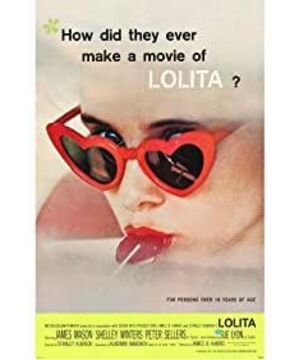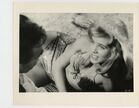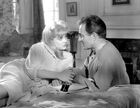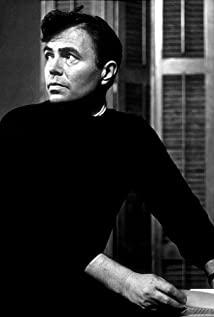She was Lo, plain Lo, in the morning, standing four feet ten in one sock. She was Lola in slacks. She was Dolly at school. She was Dolores on the dotted line. But in my arms she was always Lolita.
Lolita, the light of my life, the fire of my desire. My sin, my soul.
Luo Yili One Tower: The tip of the tongue is up, and it falls gently on the teeth from the upper jaw in three steps. Luo. Korea. tower.
In the morning, she is Luo, an ordinary Luo, wearing a sock and a height of four feet ten inches. She was Lola when she put on slacks. She is Dolly in school.
She was Dolores at the time of the official signing. But in my arms, she will always be Lolita.
This is the first paragraph of the first chapter of the original English version and the translation of LOLITA by Yu Xiaodan.
As Nabokov's most famous and controversial work, I won't make too many comments here. This cruel and elegant story can be said to be a household name. Here is just a talk about Stanly Kubrick's 1962 work "Lolita".
Today, I spent more than 2 hours revisiting Lolita. I don’t know if you have ever watched the 1997 version of Lyne's Pear Blossom Pressed Begonia (this translation is borrowed from the ridicule between Zhang Xian and Su Shi, accurate and ambiguous). Many people think that Lyne’s colorful version of LOLITA is more beautiful and more beautiful. Faithful to the original work, compared with the larger discrepancy of Kubrick's version, the degree of in-depth understanding of the original work is higher. I don’t care about this. I don’t deny Lyne’s ability to direct or deny the overall level of the new version of LOLITA. The most important thing is that I believe that the two works should not “should” be compared together, even though they are a comparison of the same work. The comparison between the audience and the critics is inevitable.
I remember the last paragraph of Lolita's preface said that as a medical record, "Lolita" will undoubtedly become a classic in the psychiatric world. I have to mention the medical concept of "pedophilia" here.
Regarding pedophilia, the medical definition is roughly "a kind of sexual perversion that targets children to obtain sexual satisfaction. The patients of this sexual perversion are more common in men, and women are extremely rare. The victims are girls or boys, and they are older. Between 10 and 17 years old, there are also as young as 3 years old.” From Humbert’s behavior in the work, it can be attributed to “regressive pedophilia due to psychological factors (excessive nostalgia for first love girlfriends).” .
It is precisely because of the sensitivity and boldness of the subject matter that Lolita has been controversial since its publication in 53 years. At that time, the conservative and decent American listed it as a banned book. So I know that ten years later, Kubrick, the ghost of the film industry, made his debut on the screen for the first time.
Kubrick used black-and-white film to interpret another strange beauty that is almost completely easy to original: or, another Lolita. The whole film is full of library-style black humor, black humor that is horrifying and sweating. Contrary to the cruel surging under the beautiful text of the original, the entire 2 hours and 30 minutes of the film is filled with unspeakable sense of absurdity. As the protagonist of the tragedy, Humbert is slightly cynical and desperate in James Mason, tired and struggling. The deep-seated eye sockets bring a sense of heaviness that the viewer can't break free. It makes people unable to understand what Ku's understanding of the original works is, satire prints or tragic comedies? The most incomprehensible thing for many readers of the original Lolita is that Kubrick set the fuse for Humbert’s series of actions in the original book. Humbert’s first love completely ignored it. The consequences of not mentioning nothing in the play are terrible: Humbert It has almost become a middle-aged pervert who is obsessed with virgins simply and without reason.
In the library version of Lolita, Lolita played by Su Lian has always been criticized for being too mature and lacking the spirituality and breathtaking temptation described in the book. However, in contrast, the image of this seemingly lazy "little" girl may indeed be very attractive: the charm itself is derived from an abstraction born in Humbert, but it is only concretized to Lolita's body, after all. There is an old saying that "beauty appears in the eyes of a lover".
James Mason, as a superstar, his acting skills are beyond reproach. In his interpretation of Humbert's eyes, in addition to despair, fear, and lust, he often inadvertently showed loss and helplessness. An important element of the movie is the sense of substitution. Once the audience’s emotions are driven by the development of the plot, the blankness in Humbert’s eyes will bring about the critical thinking in front of the screen: Humbert’s blankness must be the result of thinking. The seemingly non-existent eyes seem to remind the viewer that he is thinking about his own desires, love, and the meaning of life itself. As I said at the beginning, Lolita, light of my life, fire of my loins. My sin, my soul. With the increase in the sense of substitution, the author breaks away from the tone of Cushion's playfulness and mockery, and develops a deep sense of identity with Humbert's role instead of contempt and disdain, even though Humbert himself seemed incompetent and incompetent at the beginning of the film. In the heavy depression, the author can feel Humbert's dazed mentality, and this mentality is accompanied by the end of the whole movie, and there is no feeling of enlightenment. Many viewers commented that the reason for the unclear narrative of Ku’s film is probably also due to this: Maybe Master Xu’s ability to understand is really different from that of ordinary people.
As the other two main supporting roles, Charlotte Haci and the perverted artist Querdi are regarded as two typical neurotic existences in the whole play. As a symbol of selfishness, Charlotte played a typical hysterical and blindly slow menopausal image, so that when she was "finally" hit by a car into a "dead cat", the author felt relieved. Quilty, who always hides in the dark and never shows himself in front of Humbert, can be said to be a concrete manifestation of the judge. All about Humbert’s trial, whether it is moral or legal, will ultimately be related to this pornography. The "artist" of the movie is linked. When this man appeared in front of the audience for the first time, wearing a bed sheet to play the so-called "Rome Pingpang" with Humbert who came to kill him, he was set a ridiculous tone. The expressionless and clown-looking image seems to be silently mocking Humbert, all the desires of a cowardly, shameless, insignificant man, and all his life is ruined by this chattering and unknown so-called so-called The "artist".
It is worth mentioning that there is no line in the whole film, the "girl" who always accompanies Querdi (to be honest, the author thinks this girl is really old). Obviously, this girl is similar to Lolita and is also a victim of Querdi's "art". When Quill first appeared at the prom, her sluggish and stiff dancing posture echoed Quilty's nervous swing, and was incompatible with the joyous atmosphere of the entire prom, leaving a clear impression on the author. Every time she appeared thereafter, her numbness and speechlessness contrasted sharply with Querdi’s endless chattering madness, and the anger and despair that occasionally leaked in her eyes, the typical Beat generation’s eyes, also changed her feelings towards Querdi’s " Art" and the accusations of the devastation caused by the whole crazy world are vented incisively and vividly. This role is worth noting.
Although from the very beginning, this work has been dubbed the title of "erotic movie", but the whole film is not at all bold in the classic films such as "A Clockwork Orange" and "Doctor Strange Love". The so-called "segmented" film. There is almost no description of sexual scenes in the whole film. Even when Quildi was killed in the end, he only made a vague treatment, and shot a few shots on the portrait of Quildi hiding. It’s no wonder that some contemporary viewers think that Ku’s handling of this film is almost conservative, close to the style of children’s films. The only thing that can be called "sexually suggestive" in the film, except for the slightly provocative dialogue between Lolita and Humbert, is to paint Lolita with nail polish. As a Jew, Kushner must know that in the East, especially in ancient China, the feet were indeed related to sex to a large extent. In the author's opinion, Lolita's plump and shiny jade feet in the picture have indeed achieved the effect of sexual temptation and suggestion. In the end, when Querdi was killed, the bullet holes Humbert left in the portrait of the beautiful woman seemed to indicate that it was his own distorted aesthetic reason that ultimately destroyed his life, and it finally hit the door of the beautiful woman A shot seemed to announce his own abandonment and destruction of this distortion.
After all, Cousins is a ghost. Although the work's understanding of the original is unconvincing, it is indeed a good film to recommend if only the film and the shooting technique itself are considered. Of course, if you have the opportunity to read the original English work, it will be easier to compare and understand the causes of Lolita's tragedy, and not to be immersed in the repressed emotions and incomprehension of Kuo's style.
The above is just my personal understanding of the Kubrick film Lolita produced in 1962, and the final evaluation is up to you after you enjoy the film.
Finally, use the slogan when the film was released in 1962 to make a summary:
"How can they put "Lolita" on the screen?!"
View more about Lolita reviews











